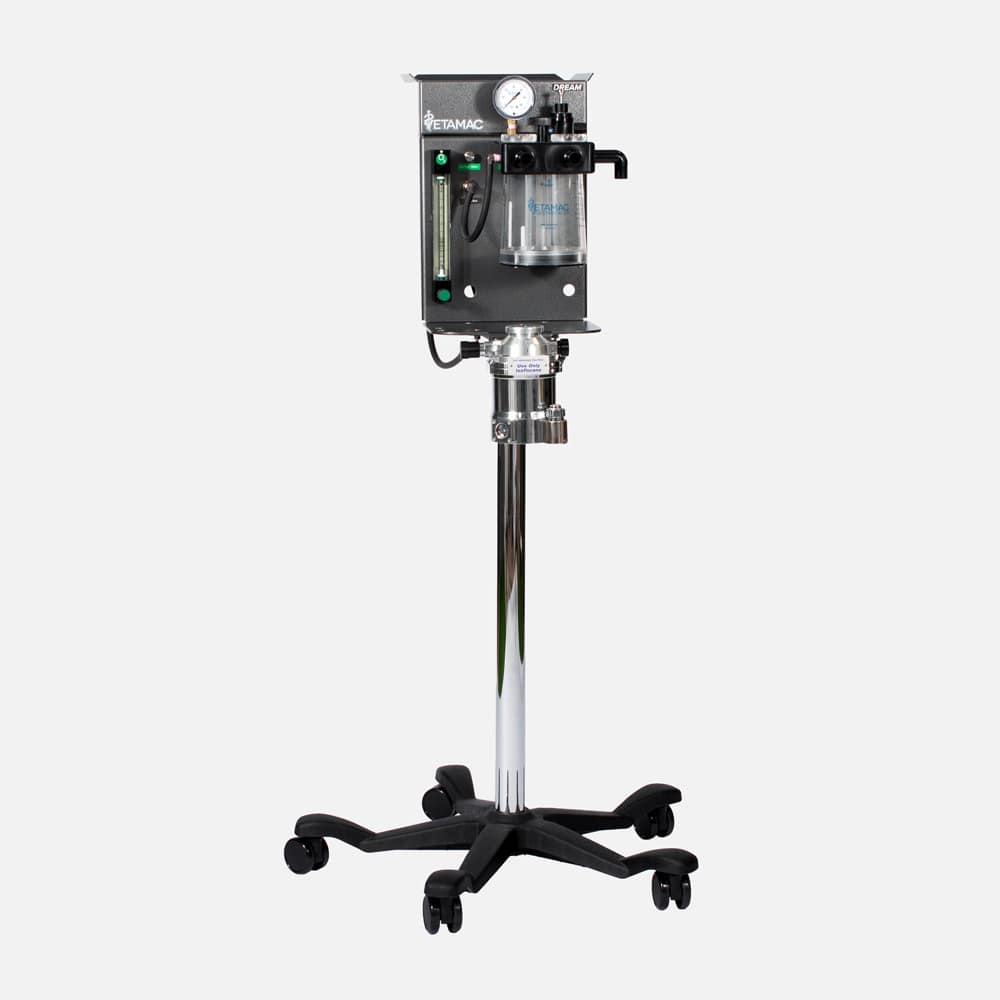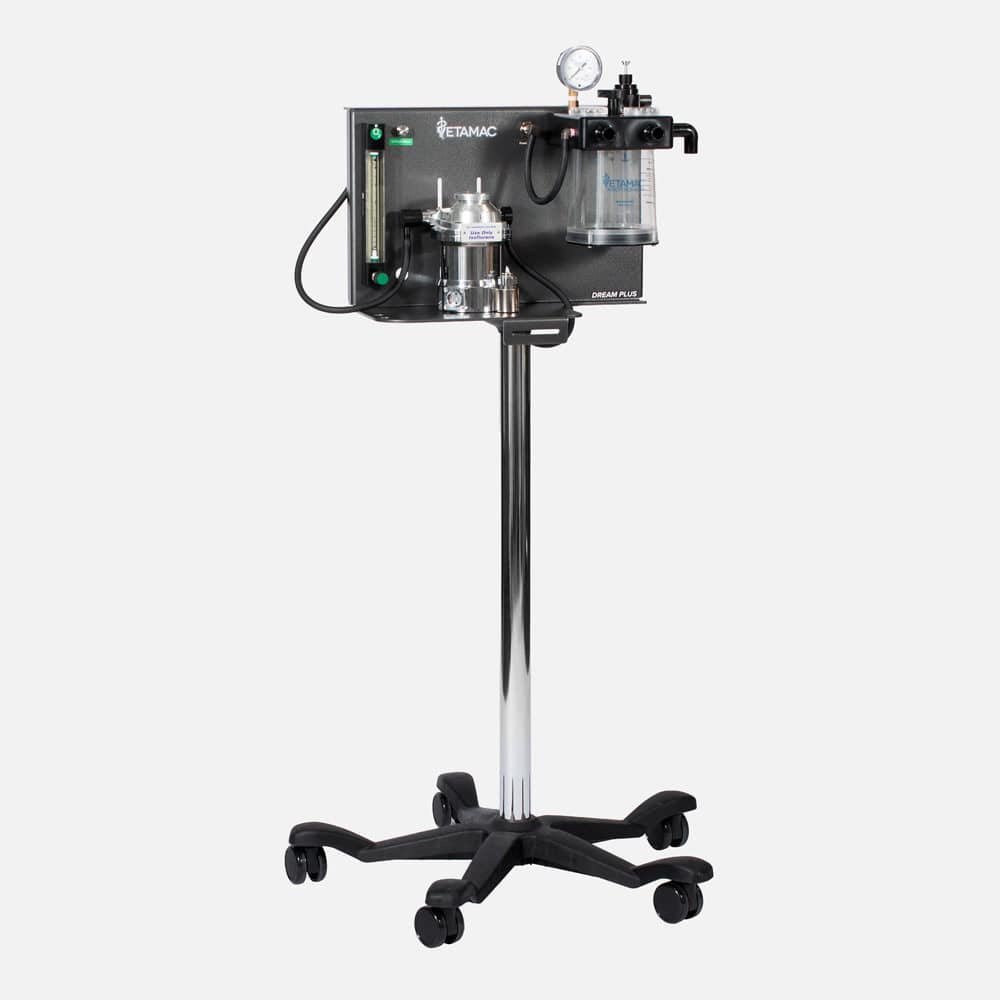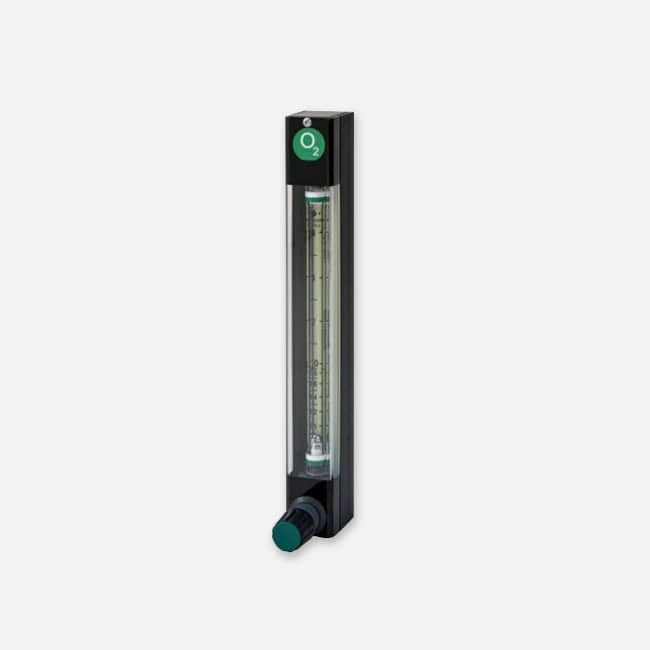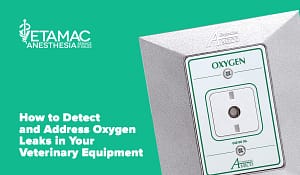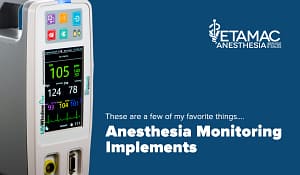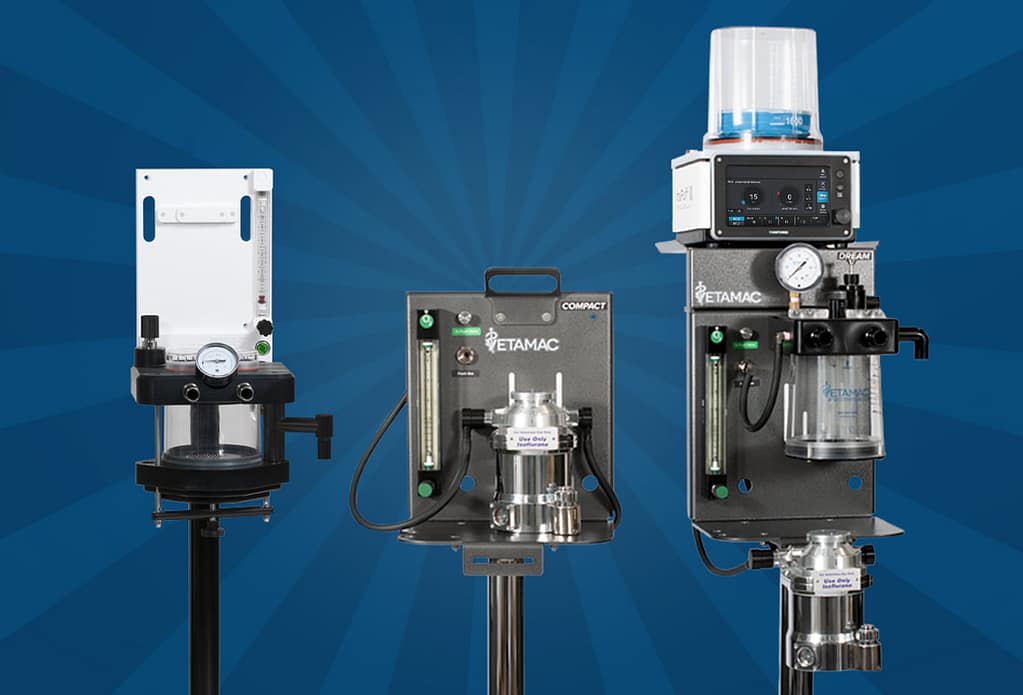Call Us
1 800 334-1583
Vol. IX: Understanding Oxygen Flow Rates in Veterinary Anesthesia
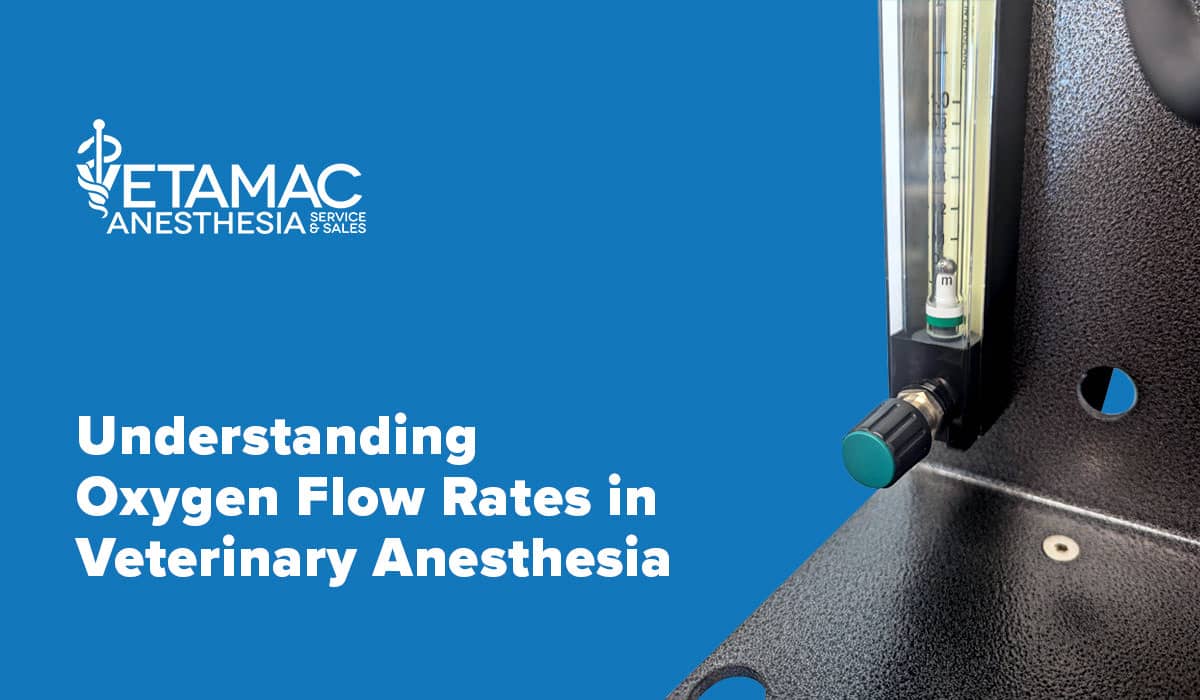
One of the primary functions of an anesthetic machine is to deliver oxygen. This issue or Vapors will discuss why oxygen flow is needed and how much flow is required.
Understanding Rebreathing vs. Non-Rebreathing Systems
Oxygen is provided, first of all, to sustain the life of the patient during the course of a procedure. The anesthetic machine has a flowmeter that delivers a flow in mls/minute or liters/minute. Two types of systems are commonly used to deliver gas to the patient:
- A rebreathing system
- A non-rebreathing system
In a rebreathing system, a portion of the oxygen delivered is rebreathed by the patient. This rebreathing of a portion of the expired gas is possible because the system has uni-directional or one-way valves and provides for the removal of expired CO2. This prevents the rebreathing of O2 9and anesthetic) before CO2 is removed. It is possible (but not likely) that one specific atom of oxygen introduced could remain in the system for the duration of the procedure.
However, when a non-rebreathing system is used properly, there is no rebreathing of any of the expired gas, therefore the oxygen flow must be sufficient to move the expired gas away from the patient so no rebreathing occurs. It is obvious that the non-rebreathing system requires a higher flow than the rebreathing system.
Oxygen Purity in Anesthesia
The question of oxygen purity should be briefly discussed since oxygen concentrators and generators are being more widely used. Is 100% oxygen necessary for patient survival? The answer is no. Even though it is not recommended clinically, there are research applications that use room air for anesthetic procedures. Most oxygen concentrators produce 90-95% oxygen. If the concentration drops to 80-85%, this is probably of little or no consequence to the patient but rather indicates a failure of the concentrator.
How Gas Flow Impacts Anesthetic Consumption
When performing inhalation anesthesia, oxygen serves a second purpose: it acts as the carrier gas for the anesthetic vapor (the only exception to this is when the vaporizer is within a rebreathing system, which will not be discussed here). Gas flow through the vaporizer is necessary to pick up and deliver the vaporized anesthetic to the breathing circuit. While this flow does not affect the concentration of the anesthetic, it does influence the amount of liquid anesthetic consumed. For example, with a flow of 1 liter per minute and a 2% setting on the vaporizer, 6 mL of liquid will be consumed per hour. If the flow increases to 2 liters per minute, the consumption will double to 12 ml per hour.
Oxygen Flow Requirements and Excessive Flow
The first issue to address is the metabolic oxygen requirement of the patient, which is approximately 1 mL/lb/min. For a 50 lb dog, this means the amount of oxygen removed from the system would be 50 mL/min. It is evident that the flows commonly introduced into the circuit often exceed what the patient requires. This raises the question: why is excessive flow used?
One reason is that there may be leaks in the anesthetic system or the evacuation system may not be functioning properly, allowing gas to escape and necessitating increased flow. Another reason is that it is easier to pre-determine a set flow rate and use it as a standard for all procedures, minimizing the chance for errors when calculating flow rates.
Finally, concentration-calibrated (direct-read) vaporizers require a minimum flow rate to maintain a consistent output. If the flow falls below 500 cc/min, the output will tend to be lower than the dial setting. Sufficient flow is necessary to overcome the resistance created in the vaporizer and ensure that a portion of the flow is diverted into the vaporization chamber.
Determining the Appropriate Oxygen Flow for Anesthesia
What oxygen flow should be used? If the vaporizer requires a flow of 500 mL/min, and the patient consumes 5 mL/lb/min, this is sufficient for a 100 lb patient. Therefore, any flow above 500 mL/min would be sufficient for any animal weighing 100 lbs or less. It appears that most practices use a 1 liter/minute flow for all patients. Some practices may use a higher or lower flow depending on their preference.
Recommended Oxygen Flow Rates for Non-Rebreathing Systems
As stated above, a non-rebreathing system requires a higher flow rate because the flow of fresh gas helps move the expired gas away from the patient. It is recommended to use a minimum flow of 1.5 liters/min with a non-rebreathing system. For patients weighing more than 15 lbs, the flow should be increased to 2-2.5 liters/min.
If your practice requires a calculated flow rate, see the chart in Anesthesia for Veterinary Technicians edited by Susan Bryant, page 84.
